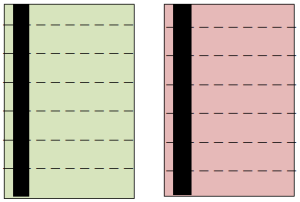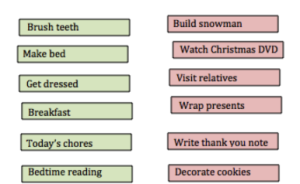I recently presented to a room full of people on the topic of Autistic People and Literacy. A few days later I again presented to another group of people on another autism related topic. It doesn’t matter the autism topic or whether the group I am presenting to be educators, therapists, or parents of children with autism – I am almost always approached by someone wanting to know how it is that I do not look or act anything like the autistic children they know.
There are many reasons autistic adults do not look like autistic children. Here are some to consider:
1. The first reason is that all children grow up. Adults, whether autistic or not, generally do not behave in their everyday lives the same way they behaved as small children. We all grow and change with maturity. Autism does not prevent a person from growing and changing over time.
2. Autism means, in part, developmental delay. When we are children this delay can be huge, making us look very different from our same-age peers. However, delay does not mean stagnant. It simply means delay. Developmentally appropriate things that cannot be done at the correct age can often be accomplished later in life. Typically, this takes a lot of support and effort, but over time that support, effort and direct instruction tends to pay off, as we grow older, being able to do many things than we couldn’t as a youngster.
3. Autism means there are communication challenges. Even so, everyone communicates, including nonspeaking autistics. Challenges are the biggest when they are the newest. Over time communication challenges can be addressed, accommodated and supported. This takes time and much effort. The result is that the communication challenges seen in a 3 year old or a 12 year old will likely not look the same when that child is 30, 50 or 70 years old.
4. I personally have not met any autistics (and I have met a lot of people from my tribe) that have not been challenged by their sensory differences. Again, the challenges are the greatest when we are youngsters because we have not yet learned how to manage our sensory system in a world that is geared for people with “typical” sensory systems. By the time we are 40 or 60 years old we are more in-the-know and can plan for meeting our own sensory needs much better than we could as youngsters.
5. Autistics want friends just like everyone else. As youngsters, most of us do not have the skills to make that happen. Also, children are grouped together according to age and due to our developmental delay we are often not social peers with same-age children. This compounds the difficulty in making friends. Early adulthood can be especially challenging as we are often socially and emotionally at a much younger age than people expect when they look at us. It is often taboo for young adults to have friends who are children, even when the young adult is the same emotional age as a 10 or 12 year old. It takes a lot of years for this to get better, but it can and does get better for a lot of autistics. Just think about it – it would be considered “inappropriate” for a 22 year old to befriend a 14 year old because of the eight-year difference, but when you are in your 30’s or 50’s nobody cares if there is an eight-year or more difference in age between friends.
These are just a few of the reasons why autistic adults do not look like autistic youngsters. In my case, there are a few more points to consider. Not only am I autistic myself, but autism is my profession. I work in the field, have written several articles and books and have made more than 300 presentations in the States and internationally. To do my work I must be diligent in my sensory regulation every day, I have mentors who I can turn to around communication struggles and other challenges, and I generally know what I need and how to ask for it should the occasion arise.
Even so, I am just as autistic as ever. I no longer live in an institution or use body slamming to communicate my needs. Over the years I have learned to work with my autism, honoring who I am in this world. Some days I am better at this than other days. I am nearing retirement now and when people approach me and are befuddled that I do not look anything like their autistic youngster these are the things I would like them to consider. Yes, autism can be difficult. I know. I live it everyday. It is my life. It is my profession. Yes, I agree – autistic adults do not look like autistic children. It is because autistics have unlimited potential.
BOOKS BY JUDY ENDOW
Endow, J. (2019). Autistically Thriving: Reading Comprehension, Conversational Engagement, and Living a Self-Determined Life Based on Autistic Neurology. Lancaster, PA: Judy Endow.
Endow, J. (2012). Learning the Hidden Curriculum: The Odyssey of One Autistic Adult. Shawnee Mission, KS: AAPC Publishing.
Endow, J. (2006). Making Lemonade: Hints for Autism’s Helpers. Cambridge, WI: CBR Press.
Endow, J. (2013). Painted Words: Aspects of Autism Translated. Cambridge, WI: CBR Press.
Endow, J. (2009). Paper Words: Discovering and Living With My Autism. Shawnee Mission, KS: AAPC Publishing.
Endow, J. (2009). Outsmarting Explosive Behavior: A Visual System of Support and Intervention for Individuals With Autism Spectrum Disorders. Shawnee Mission, KS: AAPC Publishing.
Endow, J. (2010). Practical Solutions for Stabilizing Students With Classic Autism to Be Ready to Learn: Getting to Go. Shawnee Mission, KS: AAPC Publishing.
Myles, B. S., Endow, J., & Mayfield, M. (2013). The Hidden Curriculum of Getting and Keeping a Job: Navigating the Social Landscape of Employment. Shawnee Mission, KS: AAPC Publishing.
Originally written for and published by Ollibean on February 23, 2015






